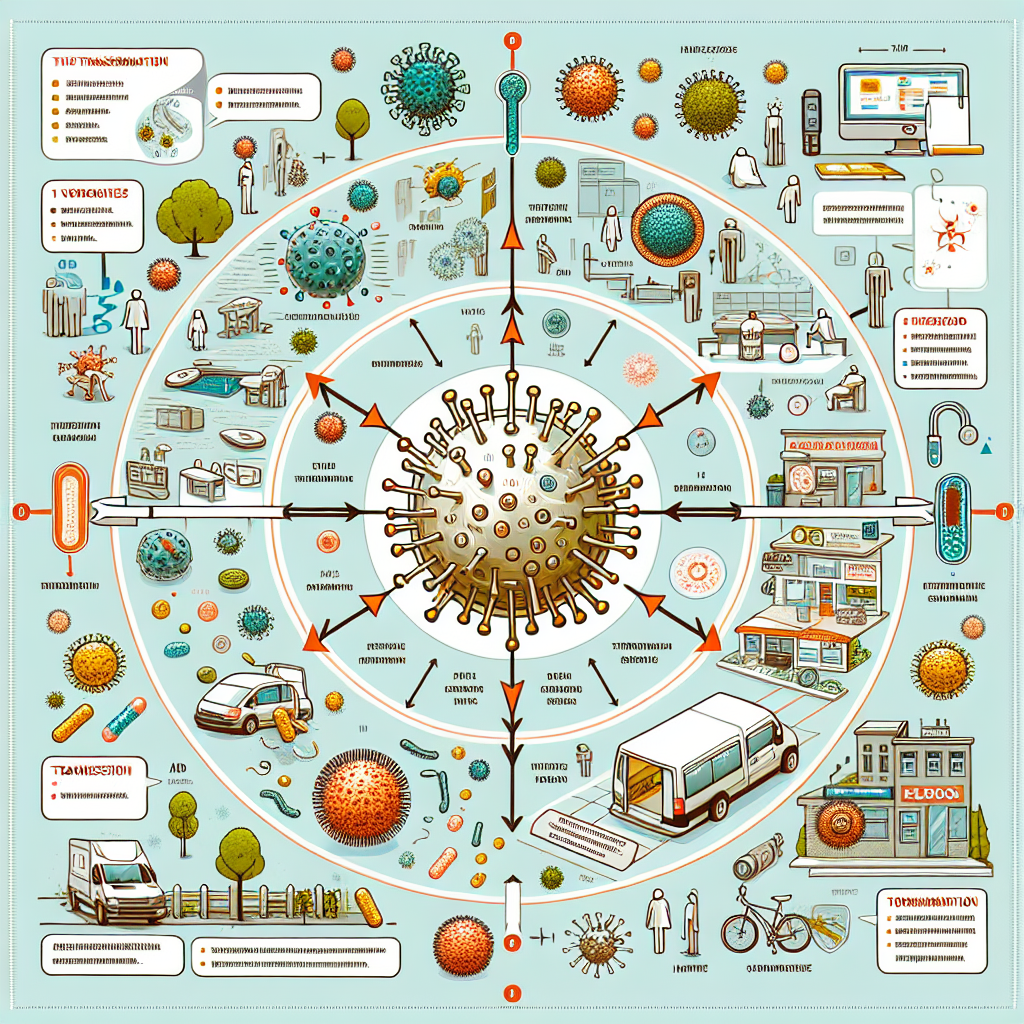Understanding how viruses and bacteria spread is crucial in our fight against infectious diseases. With the ever-present threat of illness, grasping the mechanisms of transmission can empower individuals to take proactive measures. This knowledge addresses the urgent need for prevention strategies, equipping readers with insights that can protect themselves and their communities. In this article, we’ll delve into the intricate pathways of pathogen transmission and the significant role environmental factors play in spreading these microorganisms.
Exploring Key Pathways of Virus and Bacteria Transmission
Viruses and bacteria employ a variety of complex pathways to infiltrate human hosts, and understanding these routes is essential for effective prevention. The primary modes of transmission include direct contact, airborne spread, and vector-borne transmission. Direct contact occurs through person-to-person interaction, where pathogens can move via skin-to-skin contact or bodily fluids. This route is particularly salient in the case of viruses like influenza and bacteria such as Staphylococcus aureus, both of which can be efficiently transmitted in crowded environments.
Airborne transmission represents another critical vector, particularly in respiratory illnesses. Pathogens can become aerosolized through actions such as coughing, sneezing, or even speaking, allowing them to linger in the air and be inhaled by others nearby. Notably, viruses like SARS-CoV-2 demonstrate how airborne particles can lead to widespread outbreaks, highlighting the need for ventilation and air quality control in public spaces. Understanding these transmission pathways arms the public and health professionals alike with the knowledge to implement effective interventions.
Lastly, vector-borne transmission through insects such as mosquitoes and ticks adds another layer of complexity to pathogen spread. Diseases such as malaria and Lyme disease illustrate how vectors can facilitate the transfer of pathogens from animals to humans. This mode of transmission emphasizes the importance of controlling vector populations and monitoring ecological factors that contribute to outbreaks. By unraveling these diverse transmission pathways, we can better strategize preventive measures to mitigate the spread of infectious diseases.
The Role of Environmental Factors in Pathogen Spread
Environmental factors play a pivotal role in the transmission dynamics of viruses and bacteria. Temperature, humidity, and seasonal variations significantly influence pathogen viability and the behavior of vectors. For instance, certain viruses thrive in colder climates, while others may be more stable in warmer temperatures. Understanding these environmental preferences can guide public health responses, particularly in regions experiencing shifts in climate that may alter the patterns of infectious disease spread.
Furthermore, the presence of contaminated surfaces, or fomites, can extend the lifespan of pathogens outside a host. High-touch surfaces in public spaces—such as doorknobs, light switches, and shared electronics—can harbor bacteria and viruses, enabling transmission via touch. This highlights the critical importance of hygiene practices, including regular disinfection and handwashing, to prevent the inadvertent spread of infections. The integration of environmental awareness into disease prevention strategies can drastically reduce community transmission rates.
Additionally, socio-economic factors contribute to how effectively communities can combat the spread of infectious agents. Populations with limited access to healthcare resources may struggle to implement effective control measures, resulting in higher rates of transmission. By addressing these disparities and investing in public health infrastructure, we can create environments that are less conducive to the spread of viruses and bacteria. This multifaceted approach not only mitigates immediate health threats but also fosters long-term resilience against emerging infectious diseases.
In summary, understanding how viruses and bacteria spread is vital for effective disease prevention and control. By exploring key transmission pathways and the environmental factors that influence pathogen spread, we can equip ourselves with the knowledge necessary to protect our health and the health of those around us. Engaging with this content empowers individuals and communities to take proactive measures in their daily lives. Stay informed, practice good hygiene, and advocate for public health initiatives that address both the biological and environmental challenges we face in our fight against infectious diseases.
Essential Strategies for Preventing Viral Infections EffectivelyEssential Strategies for Preventing Bacterial InfectionsDistinguishing Symptoms: Bacterial vs. Viral Infections ExplainedRelevant LinkRelevant LinkRelevant LinkUnderstanding Lower Back Pain Linked to COVID-19: Insights and ManagementUnderstanding COVID-19: Navigating Loss of Appetite ChallengesUnderstanding COVID Laryngitis: Symptoms, Causes, and TreatmentRelevant LinkRelevant LinkRelevant Link
